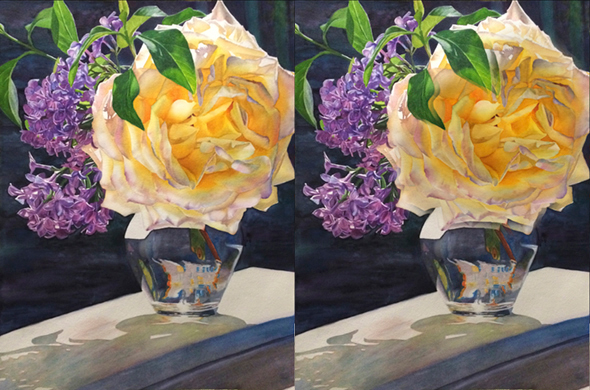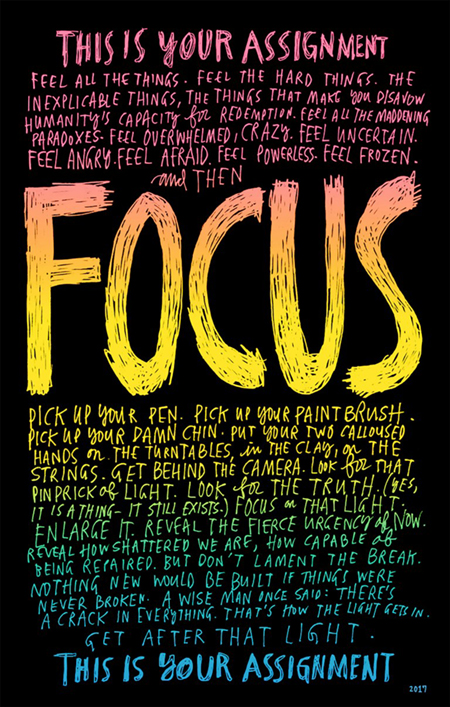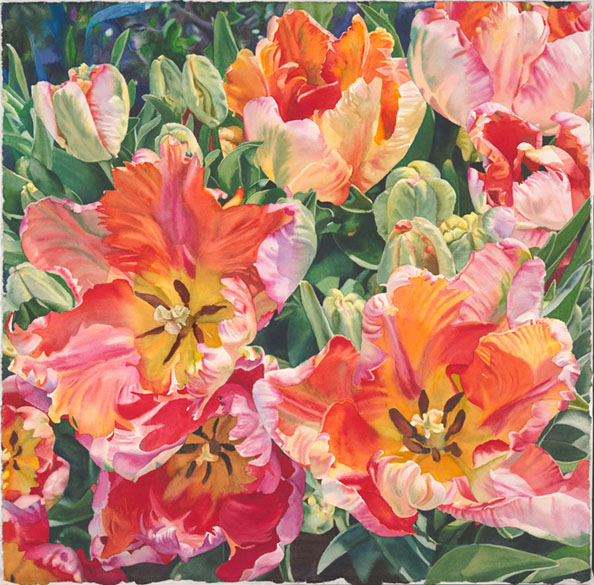May 31, 2017 – Painting the Light
- At May 31, 2017
- By Cara
- In Life Stories

During Marin Open Studios earlier this month, I was paid a visit by two lovely people – Trinette and James – who I’d met at last summer’s San Anselmo festival and they took the Get Intimate with Color workshop right after that. Trinette told me that they were continuing to paint – or at leasthad been exploring color – which I love to hear. James said that he missed the Special Saturday in January where we looked at what it takes to “paint the light.” I know that I’m doing what I’m meant to in this life in moments like this – because what I said next came through without hesitation, as if I had just prepared myself to teach the class right then. I rattled off four things it takes to paint the light. I thought I’d share them with you today.
Painting the light…when you think about it, it’s an interesting thing to consider. It’s not quite like painting certain shapes or textures – light is less definable or describable. But we do know it when we see it – it’s probably the most frequent comment I hear about this art that is coming through me – that my paintings have captured “the light.” In looking at how that is, I’ve come up with these four things.
The first is you must start with the light. All of us in our watercolor community – as do many artists everywhere – use photo references. This is particularly helpful if what you want to do is paint light. Light is fleeting, ever changing and the camera saves the light for us as it was in the moment. Looking through photos as potential paintings for the last 17-or-so years, I’ve discovered a light meter that lives in the center of me. I have a response in my body when a photo has the sense of light that is worth painting. I take a quick breath in – almost surprised by it. There’s even a sound that is part of the reaction – it’s close to an “oh” – but not quite. I want to be taken by my initial photograph – by the light it captured. In these two photos, can you see which one gave me that reaction and which one didn’t?
Not every single thing I’ve painted has shocking light like the photo that inspired “Hallelujah” (on the right), but if it doesn’t there needs to be something else that evokes magic for me – like the sugar crystals in “Jellies from Hédiard,” or raindrops in “Raindance” below. In order to sustain me over the many hours it takes to make a painting, I need to be enchanted by some quality in the image. What I’ve also discovered is that I – at least – can’t fake it. I’ve tried increasing the contrast of a photo in Photoshop and it just doesn’t work. If it’s not there to start with I can’t create the magic.
I just saw the Monet, The Early Years exhibition at the Legion of Honor in San Francisco on Monday and he, along with many others over time, painted plenty of paintings of subjects under grey skies. The paintings that grabbed, though, me were those where sunlight created contrast – these paintings shimmered from all the way across the large gallery rooms. This said, if what moves you is to paint the softness and subtleness of diffuse light – you go! We are all called to express in our own way.
The second is particular to watercolor – you have to save your whites. Watercolor paintings are most luminous, most striking when the whites and very light tones come from the white of the paper shining through – rather than from white paint. White paint has a density, a dullness that reflects quite differently than white paper. To support myself in saving my whites I always start with a strong drawing – I do all my composing digitally so I have the support of the drawing and my reference image to show me where the whites are. Then, it takes focus to pay attention as we paint. When I’m headed into a new section of a painting the first question I ask myself is: What is the lightest color that isn’t white? This has me notice not only what light color I will paint, but what I will not paint – what I will leave white. It takes practice to be able to pay attention in this way – both in observing our reference image and in where we put our brush to the paper.
Third, you have to get your darks dark enough. Contrast is what grabs us in a painting – contrast is what gets the viewer’s attention. There is no light without dark. A blank piece of paper is all light, but it’s not interesting until we put some darks on it to show us where the light is – by blocking out where it isn’t. Creating darks can be a challenge in watercolor. Because our paint is diluted with water, there is a tendency to have thin washes which don’t create dark-darks. What you want is not to paint straight from the tube – you do need to add water – your paint should always be fluid. Getting dark enough means having enough water and enough paint. You might watch this video as I painted the last part of “Eternal.” With a dense mixture of paint and water, I painted a smooth layer of paint that obscures all the white of the paper in one go. In order to paint light, don’t be afraid of the dark!
Lastly, you have to be very clear about where the light and dark are. Mostly what this means is that the lightest parts of your paintings must be the only places with the unpainted paper. I find myself pointing this out frequently to the artists in our groups. The light areas in the shadows often need to be made a bit darker. We are oriented towards saving our whites – this is good! But then as we finish, we need to look at the overall picture. Evaluate where the brightest parts of your image are – the whitest whites should be the only untouched paper. Everything else should have some amount of paint on it.

I had to make some of the light parts of the rose darker in order to have the light at the top read.
I love that there is a mystery to art, that we can look at a piece of art and wonder “how did they do that?” But for those of us who are called to make it, I also love that there is often a way to break it down and dispel the mystery – so that we can do it too! Because the thing that makes our art ours doesn’t require that we keep secret how we do what we do. The art that comes from each of us is unique and precious because of the one-of-a-kind instrument inside each of us that receives messages from the world to “paint this” – and, because just like our handwriting – no one will put the brush to the paper or canvas as we do.
Maria Popova’s Brain Pickings a week ago included this post which seems the perfect way send you out into the world – this world we are living at this moment. A collaboration by an artist and a writer, it’s a charge for those of us who are drawn to the light. I’ve ordered one for my studio – the rainbow version (of course). They are also available in black and white and red, white and blue. The link to order is in Maria Popova’s post.

Illustration by Wendy MacNaughton, words by Courtney E. Martin
“This is your assignment.
Feel all the things. Feel the hard things. The inexplicable things, the things that make you disavow humanity’s capacity for redemption. Feel all the maddening paradoxes. Feel overwhelmed, crazy. Feel uncertain. Feel angry. Feel afraid. Feel powerless. Feel frozen. And then FOCUS.
Pick up your pen. Pick up your paintbrush. Pick up your damn chin. Put your two calloused hands on the turntables, in the clay, on the strings. Get behind the camera. Look for that pinprick of light. Look for the truth (yes, it is a thing—it still exists.)
Focus on that light. Enlarge it. Reveal the fierce urgency of now. Reveal how shattered we are, how capable of being repaired. But don’t lament the break. Nothing new would be built if things were never broken. A wise man once said: there’s a crack in everything. That’s how the light gets in. Get after that light.
This is your assignment.” – Courtney E. Martin
We are the light-seekers. Artists: Go, seek it – and paint on!
With my love,
Cara




